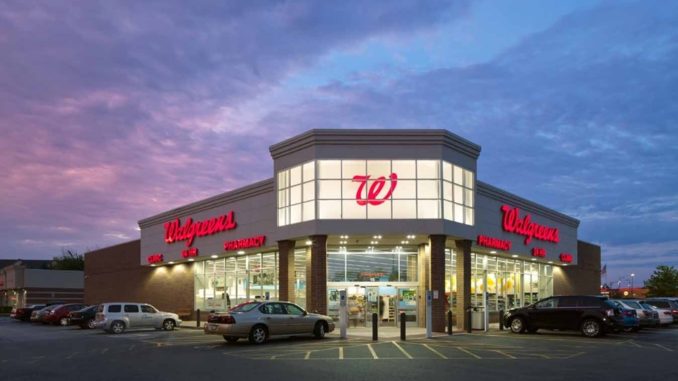
Other case studies in this series:
Kansas City Royals
Look, I know very few of any readers of this blog are big Walgreen Nationals fans, so I’m asking a lot of you all to read through this one. I wouldn’t bother except the Nationals did go through a pretty impressive rebuild, but one that has so far failed. So the good news is that we can maybe can use them as an object lesson of how not to conduct a rebuild while also pointing and laughing at them.
Length of Rebuild: Five years (2006-2010)
Primary Talent Acquisition Method: Draft
Success Level: Three division titles
Rebuild Timeline
2006: Stan Kasten and “The Plan”
The 2005 season was the first for the Washington Nationals, formerly the Montreal Expos. The first season was a an uneventful 81-81, but over 2.7 million people filed into old RFK Stadium in the baseball-starved nation’s capital. Team owners Ted Lerner and his sons hired former Atlanta Braves, Hawks, and Thrashers president Stan Kasten as the new team president, who also had a small ownership stake in the Nationals. Lerner wanted to shake off the cobwebs of the old Expos and position his team to be competitive as it moved into new Nationals Park. Kasten had experience building a successful baseball franchise with the Braves and had also experience in moving a team to a new stadium, being the head of the organization when the Braves moved into the former Centennial Olympic Stadium, reconfigured and renamed to Turner Field.
Over the course of 2006, Kasten surveyed the state of the Nationals and after the season was concluded he laid out what became known as simply “The Plan”. The Plan had three pillars that Kasten wanted to focus the talents of the organization towards.
1. Player Development
Former Expos GM Omar Minaya, operating on a shoestring budget and wanting to send the Expos out on a high note, devoted almost all of his resources to major league operations leaving his player development operation to stagnate. Kasten wanted to reinvest in minor league and amateur scouting, minor league instruction, and developing a Latin American talent pipeline. The Nationals would build through acquiring amateur talent, developing them, and matriculating them to the majors.
The Braves player development wasn’t nearly as in poor shape in 2015 as the Nationals was in 2006, but the Braves did make a sizable investment in those same areas. Their version of “The Plan” they called “The Braves Way”, but for all intents and purposes they are the same thing, the methods and ideas that Stan Kasten developed in the late ’80s with the help of Bobby Cox, Dean Taylor, and later John Schuerholz.
2. Overall Fan Experience
The Nationals were stuck with RFK Stadium, which was an all-purpose stadium very similar to Fulton-County Stadium. Taking a page from Schuerholtz, who demanded changes and updates to food service and hospitality when he took the Braves GM’s job before the 1991 season, Kasten renegotiated with the food vendors to give fans a wider choice of concessions. He had all of RFK’s ushers re-trained in order to make the old stadium as hospitable as possible.
3. Community Relations
Kasten knew that keeping the team in the good graces of their new home city took more than just a good stadium experience. Kasten invested in a full-on marketing campaign to keep Nationals baseball in the minds of potential fans all year long. Players were informed that each of the would be required to perform at least six hours of community service a month; he received no pushback from the team. Kasten was under no delusion that building through savvy scouting and drafting was not going to create an overnight on-the-field success. The team would need to build goodwill with the community. This included a close relationship with the city government, who wanted to use the under-construction Nationals Park as a springboard to revitalize the moribund Navy Yard neighborhood.
Turner Field wasn’t as nearly a poor a venue as old RFK Stadium was, but the Braves had a steadily worsening relationship with the Atlanta city government, who had steadfastly refused to consider improvements to the area around Turner Field, including more commercial opportunities for the team and expanded access to public transportation. Faced with the necessity of a multi-million dollar renovation of 17-year-old Turner Field, the Braves turned to suburban Cobb County to build not only a new stadium, but an entire surrounding complex to help generate revenue and maintain fan interest before and after the game.
2007-2008: Jim Bowden Ignores “The Plan”
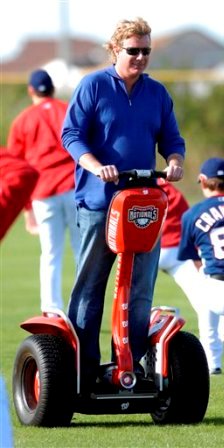
While Kasten started bringing in people to the organization to help him rebuild the structure of the franchise, he elected to keep on Jim Bowden, the general manager hired by MLB just before the transfer of the team to Washington and retained by the Lerners. Kasten decided that among all the upheaval and changes, keeping Bowden would help keep a little bit of stability. Known as an aggressive but analytical general manager, Bowden was given the responsibility of hiring a new manager to replace Frank Robinson, make any trades he felt were necessary, and to oversee the rebuild of the minor league and scouting systems.
Kasten appreciated that Bowden had built playoff rosters while with the Cincinnati Reds. It also didn’t hurt that Bowden had developed a personal relationship with Mark Lerner, a partner in Lerner Enterprises and son of Ted Lerner.
While Bowden did have some successful draft picks during his tenure with Washington, he was mostly known for his free-wheeling trades. Bowden famously traded for Alfonso Soriano before the 2006 season, and Soriano responded with a monster year, becoming the first (and still only) player in baseball history to hit at least 40 doubles, 40 home runs, and swipe 40 bases in the same year. However, Bowden then failed to cash in on Soriano’s big year, deciding not to trade Soriano at the deadline in the hopes of signing the pending free agent after the season. Instead, Soriano signed a mammoth 10-year, $133 million contract with the Cubs and the Nationals were left with a compensation draft pick that they used on left-hander Josh Smoker, a pitcher who would never throw an inning for the Nationals and would leave the organization after six minor league seasons. Bowden reportedly wanted to match the Cubs offer, but Kasten overruled him when the Cubs also offered a no-trade-clause.
Bowden made two critical errors with the Soriano affair. If the team was interested in re-signing Soriano, they should have only engaged in extension talks with Soriano and his agent prior to the trade deadline. As the deadline approached without an agreement, Bowden should have traded him for more potential building blocks. Unlike the Braves, the Nationals only had this one significant asset to trade away to help the rebuild, and Bowden blew the opportunity. While some can criticize the Braves for not cashing in on the likes of Freddie Freeman and Julio Teheran, they at least are still part of the organization. The Nationals literally got nothing for Soriano, while the Braves avoided this scenario with the Justin Upton and Jason Heyward trades.
Bowden liked getting formerly hyped players that had worn out their welcome with other organizations (oftentimes due to off-the-field issues) bringing in the likes of Nook Logan, Manny Alexander, Wily Mo Pena, Lastings Milledge, Elijah Dukes, Emilio Bonifacio, Corey Patterson, Dmitri Young and Josh Willingham without much to show for his efforts. The most successful trade for the Nationals in the Jim Bowden era would be to acquire middle reliever Tyler Clippard from the Yankees.
The Braves have also added formerly hyped players in an attempt to revitalize their careers, and for the most part they have had no more success than the Nationals did; Cameron Maybin, Gordon Beckham, Eury Perez, Jed Bradley, and Rex Brothers fall into this category. Unlike Bowden’s attempts however, the Braves have not made this a central part of their rebuild strategy. Primarily, the Braves have used trades to bring in high-upside minor league talent to supplement the draft.
Bowden did add Jordan Zimmerman, Steven Souza (who was later traded for Trea Turner), Derek Norris, and Danny Espinosa to the organization in the 2007 and 2008 drafts, but his first round selections of Ross Detwiler and Aaron Crow failed to play significant dividends. In fact, Crow didn’t sign at all, the two sides not able to come together over a $500,000 difference in Crow’s requested signing bonus.
Bowden’s moves during this time shows a failure to truly understand what it means to rebuild. Bowden consistently used organizational assets to make risky personnel decisions at the major league level in an attempt to show instant results. Perhaps he felt pressure to put a competitive team on the field as the team moved into their new park. If so, his moves backfired as the team went backwards in the standings.
While the Braves also made deals to bring in talent to make a more competitive team in their new park, they did not deal from the minor leagues to do so. The Braves also didn’t have the complete disaster of not signing a top draft pick, an absolute no-no for an organization that needed desperately to add talent and whose stated strategy for rebuilding was through the draft.
The major league club would perform poorly during this time, which is not uncommon for a rebuilding club, going 73-89 in 2007 and an MLB-worst 59-102 in 2008, the first season for new Nationals Park. The minor league system was also floundering, hurt by the failure to sign Aaron Crow and injuries that derailed the careers of other top prospects. Also, the Latin American talent pipeline had yet to produce much of anything at all, despite significant team investment. In fact, it was this that turned out to be part of Bowden’s downfall. In early 2009, it was reported that Federal investigators were looking into Bowden and several of his international scouting staff for a laundry list of issues including the skimming of signing bonuses in collusion with agents of teenage Dominican Republic players, and Bowden resigned his position in spring training (he was later cleared).
2009-2010: Embracing the Tank

Rumors were that Kasten may have been looking to make a move anyway and had gotten frustrated with Bowden not sticking with The Plan. Three days after Bowden resigned, Vice President of Baseball Operations Mike Rizzo was promoted to General Manager.
Rizzo was hired by Kasten in 2007 and tasked with rebuilding the scouting department. Rizzo was a key executive for the Arizona Diamondbacks, and was responsible for identifying and signing much of the amateur talent that helped take the team to back-to-back NL West pennants and a World Series title in 2002. After Bowden resigned, Rizzo was a logical choice to be promoted to the GM’s role, given his central role in the plans for the 2009 draft.
The first order of business for Rizzo was to start dismantling the team Bowden had spent all off-season putting together. Wily Mo Pena was released before the end of spring training, and the team continued to shed the young veterans that Bowden brought in over the course of the season. Rizzo folded into the major league team the prospects that had been blocked before, most notably shortstop Ian Desmond and starting pitcher Jordan Zimmerman to go with young star Ryan Zimmerman (no relation). Nevertheless, the team was horrible again and dropped to a 59-103 record, again the worst in baseball — and guaranteeing Washington another first-overall draft pick.
There has been a debate all around baseball about what it means to “tank”, or to purposely put together losing teams. Some believe that pro teams have an obligation to their fans to always try to put a competitive team on the field.
There isn’t any such contract. The Expos had been a non-competitive team for over 10 years when Kasten took over. The best way to accumulate talent under a budget is through the amateur draft. The only way to ensure the best draft position is to have the worst record in a year. Rizzo embraced the tank, because it was the only way to bring in the talent to get a winning core.
There have been very few amateur baseball players more hyped than the two Nationals first-overall picks in 2009 and 2010, right-handed pitcher Stephen Strasburg out of San Diego State and outfielder Bryce Harper out of Las Vegas High School. The overwhelming consensus top picks for both years, it seemed like the Nationals couldn’t have chosen a better time to have back-to-back 100+ loss seasons. Other notable players drafted by the Nationals in the two “tank years” were right-handed reliever Drew Soren, outfielder Michael Taylor, and left-hander Robbie Ray (who would be traded for Doug Fister), but Strasburg and Harper were the real prizes.
Rizzo would also make some savvy trades of veterans at the trade deadline, including sending closer Matt Capps to Minnesota for catcher Wilson Ramos.
2011: The End of the Rebuild
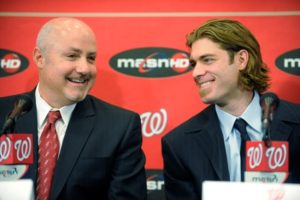
After the 2010 season, Stan Kasten left the team to pursue an ownership stake in the Los Angeles Dodgers. Perhaps not coincidentally, almost immediately afterwards the Nationals signaled that their rebuild was over with the stunning signing of outfielder Jayson Werth to a 7-year, $126 million contract. Perhaps nothing signified more that Kasten’s methods were leaving with him than that Werth also got a complete no-trade clause.
The Nationals would also add first baseman Adam LaRoche, outfielders Matt Stairs and Rick Ankiel, and right-hander Chien-Ming Wang. The Lerner family had opened the floodgates and put the Nationals in a higher spending bracket. Perhaps their sudden impatience with the slow methodical rebuild had to do with Ted Lerner’s advancing age as he was now well into his eighties.
The hardest thing that a team has to do in a rebuild is figure out when to end it. Ideally, the draft will have brought in not only key starters, but also provide depth for the inevitable injuries.
In my opinion, the Nationals ended the rebuild a year too soon. Ryan Zimmerman, Ian Desmond, Stephen Strasburg, Drew Storen, Bryce Harper, and Anthony Rendon (who was drafted in 2011) was a strong home-grown core, but the Nationals drafts weren’t particularly deep, and the Nationals have consistently had issues building depth from within, especially in generating enough pitching to fill most of a major league bullpen, a recurring team Achilles heal.
The Braves are nearing this crossroads themselves and seem tempted to trade from their stockpiled minor league pitching depth to make a splash on the major league team.
2017: The Nationals Today
Was the Nationals rebuild successful? From 2011 through the time of this writing, the Nationals have won 608 games, third most in the major leagues during that time. They have won 3 out of 6 National League East pennants and is well on their way to their 4th out of 7.
Despite this, the Nationals have yet in all their history to actually win a playoff series. Now, if anyone should understand the uncertainties and strange things that can happen in baseball playoff series, it should be Braves fans, who saw the most stacked team since the Big Red Machine of the 70s only win one World Series and regularly get bounced out of the playoffs by seemingly inferior teams.
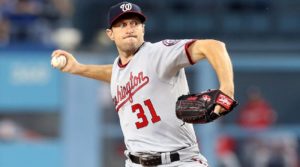
The Nationals are also paying more each season to maintain their hold on the division and the right to get beaten in the first round of the playoffs. The 2017 Nationals have the 9th highest payroll in the majors. They are also on the hook for the contract of right-hander Max Scherzer, the ace that the Nationals acquired in 2015, for nearly $130 million through the 2021 season. While Scherzer has been phenomenal for the Nationals to date, that’s an awful lot of eggs in that one basket, and it’s emblematic of how Rizzo has had to use cash to plug in the holes caused by the team’s inability to matriculate consistent home-grown talent. For a team that started their rebuild focusing on the draft, the team only has has gotten about half of total team bWAR in 2017 from players developed in the Nationals system.
One constant through the era of contention has been questionable managers. Davey Johnson started the run, but despite being a good, and occasionally brilliant manager, he wore out his welcome as he always has done and was “retired” by team. Rizzo hired the untried Matt Williams for the 2014 season, a popular coach who had by 2015 lost control of the clubhouse. For the 2016 season, the team brought in former Cubs and Reds skipper Dusty Baker, an old-school manager who breeds devotion from his players, but also has well-known tendencies to favor bunting and questionable bullpen usage.
There is debate in the baseball circles about how much control a manager has on actual team wins and loses, but there is consensus that a bad manager hurts a team more than a good manager helps one. Williams was not a good manager, and was a major problem in the Nationals wasted 2015 season.
The Braves fired a manager in 2016 for the first time in 26 years and have since turned over the reins of the team to long-time organizational man Brian Snitker. To say the jury is still out on if Snitker will be a good manager for the team is a vast understatement.
Lessons For the Braves and Braves Fans
- Rebuilding through the draft means hitting on more than just your top draft pick. Not everyone can be or has to be a star, but even non-core contributors that can be home-grown rather than bought or traded for can enhance team value. Every time a starting National has gone down over the last six years, the team has struggled to come close to replacing him in-house. Lack of depth also is a key reason Nationals bullpens are often expensive and/or ineffective.
- Having the right off-the-field personnel matters. The Nationals wasted time with a GM who did not have the skill set to effectively rebuild, managers of questionable skill, and international scouting executives that not only were ineffectual, but were actually also swindling the team.
- As hard as it is for fans, the Nationals at least for two seasons embraced the tank in a way that the Braves never did. This netted them back-to-back first overall picks and contention within a couple years. It remains to be seen if the Braves strategy of keeping key contributors in order to stay away from 100-loss seasons pays off, and we’ll likely never know for certain.
- Bringing in other team’s failed projects is a viable secondary strategy, but under no circumstances should it be considered a primary way to build a new core. There’s usually a reason why players fail to produce.
- Rebuilding teams have no need of veterans playing out the last year of their contract. The Nationals lost an opportunity with Soriano. The Braves capitalized on Justin Upton and Jason Heyward. The mystery of 2017 is why Brandon Phillips and Kurt Suzuki are still on the team.
Now here’s a .gif of Bryce Harper hitting a wall.


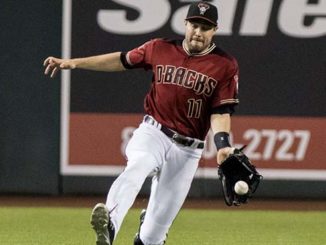

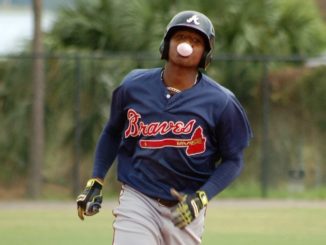
These rebuilding comparisons are very interesting. Your straightforward analysis is refreshing. You’ve spotlighted the always critical role of the team’s leadership; Bowden and Williams truly had a lot to answer for. Hopefully the Braves will have avoided some of their errors, although the teardown trades of Craig Kimbrel and Andrelton Simmons netted virtually nothing of significant value — these two franchise talents were under relatively inexpensive long-term control and were given away at fire sale prices. They had been the best reliever and shortstop in the 130+ years of the franchise, and netted a middle relief prospect and a 7th inning setup man prospect. Hopefully the current leadership will stay the course by developing pitching prospects through the draft and that not too many of those youngsters will blow out their arms. A key unknown that remains is whether the rebuilt scouting staff can recognize serious hitting talent, particularly with respect to domestic talent available through the Major League Draft. Thanks for these rebuild comparisons: which team will you study next?
Thanks for reading!
There’s certainly a question about if trading Simmons was the right thing to do, but there was no reason to keep Kimbrel. Having the best closer in baseball on a rebuilding team is like having a Maserati sitting on blocks in your front yard. The particular deal can be debated, but the process was right.
As for hitting talent, I really like a lot of the kids we got from the international side, and not just Maitan. Juan Carlos Encarncion and Yunior Severino look great too. Drew Waters in the 2nd round of the last draft was a huge get too.
Pittsburgh is next, probably Chicago after that.
Please keep them coming!